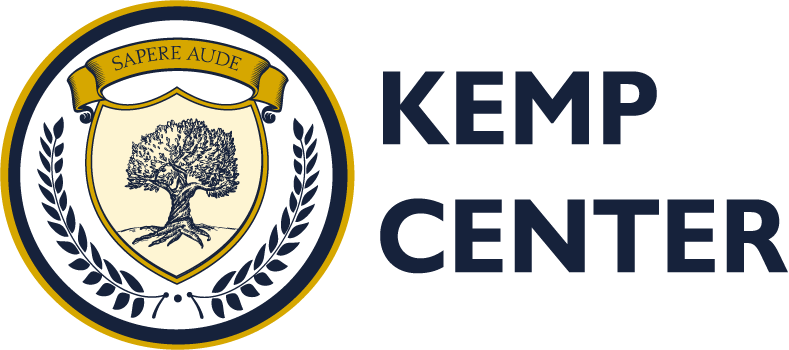Elevate your career: a comprehensive guide to career development

Table of Contents
Tell me if this sounds familiar: You are sitting at your desk, looking at the same tasks you’ve been doing for months and you’re wondering what you are doing with your career. You were once excited about this role, but now you’re just surviving. It’s not that you’re miserable but also that you’re not thriving. So, you’re thinking about making a change, a big one. But the sheer volume of options, fears, and unknowns keeps you rooted in place.
The good news is, you’re not alone in your fear and feeling stuck in place. Elevate your career is your step-by-step guide to breaking through the plateau and taking control of your professional path. We’ve compiled proven strategies, expert insights, and real-world tools that have helped thousands turn career stagnation into career acceleration. Now it’s your time to move forward with intentional, clarity, and confidence.
Why Most Career Development Plans Fail (And How to Avoid These Mistakes)
So realistically career development plans are meant to provide direction, but most of the time employees feel lost as opposed to being empowered and motivated. So, here’s the reality: most of the career development plans fall short. Here’s a few reasons why:
- They are outdated
- They provide vague goals
- Or they have a one-size-fits-all approach, which ignores the need for individuality
“Only 33% of U.S. employees are engaged at work.”
— Gallup, State of the American Workplace Report
This lack of engagement stems from unclear progression paths and misguided planning. In order to better plan your career development, it helps to look at what not to do:
- Don’t set unrealistic goals or vague ones
- Don’t follow generic advice
- Don’t ignore feedback or fail to self-reflect
Don’t repeat these patterns, create a career path strategy that is tailored to you. Create a path that focuses on your strengths, values, and ambitions.
The 7-Step Career Development Framework That Actually Works
When exploring the internet or even social media pages, you will often find that career advice is often too broad or too rigid. What sets this framework apart is its balance between self-awareness, strategic planning, and real-world execution.
Step 1: Conduct a Brutally Honest Self-Assessment
The first thing that you want to do is uncover what your true strengths, weaknesses, values and skill gaps through self-reflection and various tools. Self-assessment is the foundation of any effective career strategy. It’s not about judgment. It’s about building self-awareness so your next steps are rooted in reality, not assumption.
“Self-awareness is the single most important skill for career success, yet only 10–15% of people are actually self-aware.”
— Dr. Tasha Eurich, Organizational Psychologist & Author of Insight
In this step you will uncover your blind spots, gain an understanding of your personal motivators and recognize any skill gaps. This way when you set your future goals they are both ambitious and achievable.
Identify Your Core Strengths and Blind Spots
So to elevate your career and achieve growth it’s important to understand what you are great at and what is holding you back.
You can use tools to help you find out both sides of the coin. Some popular tools include:
- CliftonStrengths (StrengthsFinder)
- VIA Character Strengths Survey
- 360-Degree Feedback Surveys (from peers, managers, direct reports)
Also, you can try to ask yourself reflective questions, such as:
- What tasks energize me vs. drain me?
- What do colleagues consistently ask for my help?
- What feedback have I ignored or dismissed that keeps resurfacing?
Here is a professional tip: review previous feedback from clients or look back at performance reviews. See if you can find a common thread for both strengths and any patterns of struggle.
Assess Your Values and Non-Negotiables
You need to know what your values are, as they typically drive motivation, fulfillment, and long-term satisfaction. When your career doesn’t align with your values, chances are you will experience burnout.
You can use tools such as Life Values Inventory or MindTools Values Assessment.
Also, make sure to ask yourself questions such as:
- What makes a job feel meaningful to me?
- What have I loved or resented in past roles?
- What are 3 things I refuse to compromise on in my career?
Consider ranking your values and identifying your top 3. These values can include autonomy, growth, recognition, purpose, balance, or stability.
Evaluate Your Current Skill Gaps
Now, you want to evaluate your current knowledge and capability gaps. This way you can invest your time in learning skills that will actually move you forward.
Here are some ways you can do this:
- Compare job descriptions of roles you aspire to with your current resume.
- You can ask a mentor about what skills would elevate your career the most
- You can also use tools such as LinkedIn Career Explorer, Skill Gap Analyzer, or Coursera Skill Pathway Assessments.
Also, you can ask yourself some questions that will help you evaluate your current skill gaps. Some good questions to ask are:
- Which technical or soft skills am I missing that my future role demands?
- When was the last time I meaningfully upgraded my capabilities?
- What’s one thing I wish I were more confident in at work?
Step 2: Research and Map Your Industry Landscape
Now, that you understand your strengths and values, it’s time to understand the real-world opportunities and risks in your chosen field. In order to achieve strategic career growth, you not only need to understand yourself but also the market.
“Career success is increasingly dependent on external awareness—understanding how industries shift and where future opportunities lie.”
— Dr. Helen Tupper, Career Strategist & Co-Author of The Squiggly Career
By following along with this step, you will be better equipped to make informed decisions about your next move.
Identify Growth Industries and Declining Sectors
Just like a sailor needs to check the weather before setting out to sea, you need to understand market momentum to navigate your career. It’s important to realize that certain industries are booming while others are shrinking.
You can research this by using the Bureau of Labor Statistics (BLS) Occupational Outlook Handbook to explore:
- Check out job growth projection for the next 10 years
- Explore industry specific risks and opportunities
Also, you can use market reports from McKinsey, Deloitte, or LinkedIn’s Economic Graph.
Here are some industries that experiences major growth in 2025 and beyond:
- AI & Machine Learning
- Renewable Energy
- Healthcare (especially telemedicine & mental health tech)
- Cybersecurity
- UX/UI and Product Design
Whereas, there are industries that are noticing a decline such as:
- Print Media & Traditional Publishing
- Manufacturing (due to automation)
- Retail Cashiers (replaced by self-checkout & e-commerce)
But, it’s important to realize that even in industries that are experiencing a decline, growth is still possible. You will often find opportunities for growth within niche areas of these industries.
Map Career Paths Within Your Field
Familiarity with the existing roles, and how people transition from one to another, assists in avoiding stagnant positions whilst enabling you to visualize your growth roadmap.
Here is a sample career progression table for someone in the tech industry:
|
Entry-Level Role |
Mid-Level Role |
Senior Role |
Cross-Functional Option |
|
Help Desk Technician |
Systems Administrator |
IT Infrastructure Manager |
Cybersecurity Analyst |
|
QA Tester |
QA Engineer |
Automation Test Lead |
DevOps Specialist |
|
Junior Developer |
Full Stack Developer |
Software Architect |
Product Manager |
What can you do?
- Interview 2–3 professionals in roles you’re interested in and ask how they got there
- Use LinkedIn Career Explorer to reverse-engineer common transitions in your industry
Analyze Salary Trends and Job Market Data
Winging it is for karaoke, not your paycheck—trust the data. When you understand what your target role pays and how compensation evolves, it helps you plan and negotiate with confidence.
Tools & Resources:
- Glassdoor, Payscale, Levels.fyi (for tech)
- LinkedIn Salary Insights
Here are some key salary questions to ask:
- What’s the starting salary vs. 5- or 10-year projections?
- How does location or remote work affect compensation?
- Are benefits and equity common in this field?
Step 3: Set SMART Career Goals (With a Twist)
If you are a wishful thinker, then you can set any goals. But, you need a strategic mind that will help you set goals to actually move you forward. Chasing worthwhile goals is how careers are made.
Traditional SMART goals (Specific, Measurable, Achievable, Relevant, Time-bound) are helpful, but on their own, they can lack soul, context, or ambition.
“Goals should be both strategic and emotionally compelling. The most effective ones align logic with personal meaning.”
— Dr. Mark Murphy, Author of Hard Goals
Using the SMART framework, you will define your short-, medium-, and long-term career goals in this step. However, there’s a twist: we’ll also connect them to your values, strengths, and industry research from Steps 1 and 2.
Short-Term Goals (6–12 months)
Take small, clear steps that you can take soon within this next 6 to 12 months that will help you get closer to that dream job.
Here are a couple examples:
- Finish a certificate (like a Google UX Design course) in the next 6 months.
- Fix up your LinkedIn profile and portfolio before October.
This is important because you will have wins that you can pat yourself on the back. Also, it will keep you moving forward without feeling overwhelmed.
Medium-Term Goals (1–3 Years)
Now it’s time to set bigger goals, they will take you more time, but it will move your career forward.
Here are a couple of examples:
- Become a team leader by learning management skills and helping others on your team.
- Switch to a cybersecurity job in the next 18 months by taking the right courses and getting experience.
These medium goals will help you build your reputation. Gives you the opportunity to learn new things and get noticed.
Long-Term Vision (5+ Years)
Now, let’s envision and outline your dreams and future. It’s not a checklist, it’s a direction.
Let’s look at a specific example:
- Become a Director of Learning & Development at a remote-first company by 2030.
Here are some things to work on, to get there:
- Lead more team members and lead projects.
- Share your ideas online or at events.
- Get a degree or certification that helps you grow into that role.
When you have a long-term vision, you can make smarter decisions today that can lead to your dream job tomorrow.
Step 4: Create Your Skill Development Strategy
Great, now you know where you want to go, it’s time to build the skills to get there. The key is to focus on the skills that matter most, learn them the smart way, and stick with it.
“People who set clear learning goals and practice regularly are 3x more likely to succeed in their careers.”
— 2022 LinkedIn Learning Workplace Report
Identify High-Impact Skills for Your Industry
So, don’t panic, you don’t need to know everything. All you need to know is the right skills to push you forward.
Here are a few ways to find these skills:
- Look at job postings for the roles you want
- Ask mentors or managers about which skills they think will help you level up
- Explore industry reports on LinkedIn or Coursera
Check out this chart with a few examples of skills per industry:
|
Industry |
High-Impact Skills |
|
Marketing |
SEO, Copywriting, Data Analytics |
|
Tech |
Python, Cloud Computing, GitHub |
|
Healthcare |
Telehealth, Patient Communication |
|
Product Design |
Figma, UX Research, Prototyping |
Choose the Right Learning Methods
“Microlearning—short, focused lessons—boosts retention by up to 80%.”
— Association for Talent Development (ATD), 2023 Study
It’s not enough to just pick what you learn but also how you learn. Pick methods that work for your time, budget, and style. Some popular learning options include online courses, bootcamps, books, podcasts, mentors, or on-the-job practice.
Create a Learning Schedule That Sticks
When you are creating a learning schedule, I want you to think of tortoises, not a caffeinated squirrel. Slow progress wins.
Here are some tips to build an effective schedule:
- Set aside a few hours a week (for example 30 minutes a day)
- Add learning time to your calendar like a meeting
- Use habit stacking (e.g. listen to a course while walking)
- Finally celebrate small wins
Explore more of our KEMP Center Skill Development Articles
Step 5: Build Your Professional Network Strategically
You don’t need a thousand contacts—just a few genuine connections. Great networking is about thoughtful conversations with the right people, done consistently.
“Your network is your net worth.”
— Porter Gale, Author & Marketing Executive
Identify Key People in Your Industry
First off start making a list of people who are either doing what you want to do. You can also include people who are one step ahead of you.
Some people you can look for:
- People in roles you want (check LinkedIn job titles)
- Speakers are events
- Past coworkers or classmates doing interesting work
- Mentors, managers, or friendly experts
Networking Events vs. Online Networking
You can pick how you meet people whether in real life events or online. If you want, you can even combine both. Most importantly, pick what works for your schedule and personality.
“80% of professionals consider networking important to career success—but only 25% do it consistently.”
— LinkedIn Career Study, 2023
For in-person events you can try local meetups or conferences. Also, consider industry workshops, alumni events or speaker panels. In terms of online networking, you can try LinkedIn, Slack groups, Discord communities, Reddit, etc.
Maintaining Long-Term Professional Relationships
Thinking about your network like a garden, you don’t need to water it everyday, but you can’t just forget about it.
Here are a few ways to keep it going:
- Check in every 3–6 months: a quick DM, article share, or “Happy New Year” note
- Celebrate their wins (job updates, promotions, posts)
- Offer help when you can (introductions, feedback, resources)
Step 6: Gain Strategic Experience and Exposure
Here’s the good news, you don’t need to wait years for a promotion to grow your career. The smartest professionals look for ways to build experience that makes them visible and valuable. Both inside and outside of work.
“The fastest way to get ahead is to get seen solving real problems.”
— Dorie Clark, career strategist and author of The Long Game
Volunteer for High-Visibility Projects
Search for chances to work on projects that matter to your team or company. This can be outside your normal job description. You will learn fast by doing new things, while also building trust and showing initiative. Finally, leaders will notice those people who step up.
What to look for:
- Cross-functional projects (working with other teams)
- Projects with executive visibility (like presentations or pilots)
- Initiatives tied to company goals (growth, retention, revenue)
Side Projects and Freelancing Opportunities
If you don’t have those opportunities at work, create your own. Side projects and freelance work build your skills, your confidence, and your portfolio.
Some examples include:
- Build a website, app, or design portfolio
- Offer help to a nonprofit
- Use platforms like Upwork or Contra to land real-world freelance gigs
“Side projects give you a platform to practice, experiment, and show proof of what you can do.”
— Steph Smith, Head of Product at Andreessen Horowitz Media
Mentoring Others to Build Leadership Skills
You can be a leader without the title of manager. You can mentor others; this will help you learn how to support others — which is a skill hiring managers love.
There are a few ways that you can get started. You can offer mentoring interns or new team members. Consider volunteering for peer learning programs. Join platforms like ADPList or MentorCruise.
This will help you build communication and coaching skills. Also, you will learn by teaching. Finally, it positions you as a go-to resource in your field.
Step 7: Track Progress and Adjust Your Plan
So, your career is not a crockpot. You can’t just set it and forget it. It needs stirring, seasoning, and taste tests along the way. Check in often, adjust the recipe as you grow, and don’t forget to savor your wins. Progress isn’t about perfection. It’s about keeping the heat on without burning it. KEMP Center offers tools to help you track and accelerate your career progress.
“What gets measured gets managed — and what gets managed, improves.”
— Peter Drucker, Management Expert
Monthly Progress Reviews
Set aside 30 minutes each month so that you can reflect on what’s working and what isn’t. See what progress did you make in the month. Also, what did you learn and where you are stuck. Finally, what is one thing that you want to focus on in the following month. You can remember to this by setting a reminder in your calendar.
Quarterly Goal Adjustments
For every three-month period, zoom out and do a check: Are your goals still aligned with what you want?
Are there areas that you want to adjust? Perhaps you are wondering if short or medium goals are still realistic. Did you discover new interests or opportunities. Finally, are there any skills that you need to learn now.
Annual Career Plan Updates
Take a moment to evaluate your career roadmap with refreshed perspective once a year. Do you find yourself still excited and inspired about your longer-term vision?
Reflect on your biggest wins, lessons learned, and any big changes you went through over the past year. Then adjust your short-, medium-, and long-term goals accordingly.
You can use tools, like the Career Progress Review Template, Goal Adjustment Worksheet, and Annual Planning Workbook to help guide the process—ideally around year-end or on your work anniversary.

Common Career Development Roadblocks (And How to Overcome Them)
Career development can be super exciting, but tell me does this feel familiar, all the sudden life kicks in. You’re juggling work, maybe a family, maybe burnout. You want to grow — but there’s friction.
Here are 5 common reasons people get stuck, and how to move through them without needing a 10-year plan or a TED Talk.
You say there isn’t enough hours in the day
This is totally understandable. You may have various meetings, family obligations, and trying to remember to eat. So how are you supposed to work on your career?
Honestly, start small and simple. Instead of watching that netflix, spend 20 minutes listening to a podcast. If you use public transport to commute to work, do online courses on your phone, instead of mindlessly scrolling. Career growth isn’t built in 5-hour blocks. It’s built in the leftover time you didn’t think mattered.
You feel stuck because you don’t know where to start
Unfortunately, feeling stuck is why most people stop before they even start. You are probably overthinking what your first step should be. Stop overthinking, just pick one thing. Take a quick strengths test. DM, someone you admire. Jot down what you don’t want in your next job. Momentum matters more than strategy when you’re just getting moving.
Your current boss isn’t helping
Not all companies are built to support growth and career development. Unfortunately, some companies are happy to keep you where you are but that doesn’t mean you should be stuck. Take the reins and learn on your own, join a free community, or take on a freelance project. You need a greenlight from your manager to build momentum for your career.
Hello, imposter syndrome
Do you feel like a fraud? If you’ve ever thought “Who am I to do this?” — congrats, you’re human. The people you look up and admire, feel the same way. So, you don’t have to wait to feel confident, act first and let that self-confidence catch up. You would be surprised how fast small wins can add up, you just must let them.
Industries don’t stand still, and neither can you
Whether it’s AI, automation, or your own job quietly slipping away, change can be scary. The best move? Get curious. Watch what’s rising. Learn one new tool. Speak with people in expanding sectors. You don’t have to transform overnight. Just keep moving.
Frequently Asked Questions (FAQ)
How long does it take to see results from a career development plan?
This really does depend on the individual but people who are motivated and consistent can see changes in their career in as little as 3 to 6 months. Small wins add up such as new skills, better confidence, or networking connections. These often lead to bigger opportunities down the line.
What if I don’t know what career I want?
That is totally normal and more common than you think. Start by exploring your interests, strengths, and values with simple self-assessments or by trying small projects. Spend some time learning and discovering before rushing to make any decisions.
How do I balance career development with my current job?
So you don’t need to flip your life upside down to balance career development and your current job. Honestly, start with small manageable chunks. This can be even 20 to 30 minutes a week. During this time, you can learn, network or goal set. Use smart breaks, commutes, or weekends. Prioritize actions that fit your schedule and energy levels.
Should I change careers or industries?
You can if this feels right for you. Sometimes a change will reignite a passion in you or perhaps you will have more opportunities for growth. But, it’s okay to stay where you are and grow in your current field.
Honestly, you can try a side project or freelance gig to test the waters before you make any decisions. Consider your skills, the market, interests and personal goals, to help you make the best decision for you.
How often should I update my career development plan?
Regular check-ins keep your plan useful. Aim to review your progress monthly, adjust goals quarterly, and do a full update once a year. This helps you stay flexible and aligned with your evolving priorities and opportunities.

Summary
We managed to cover a lot a short amount of time. From understanding yourself better to mapping your industry, setting goals, and building new skills. These 7 steps give you a clear path forward:
- Conduct a brutally honest self-assessment
- Research and map your industry landscape
- Set SMART career goals (with a twist)
- Create your skill development strategy
- Build your professional network strategically
- Gain strategic experience and exposure
- Track progress and adjust your plan
The key message that we want you to take away is to put these steps into action. Start small, stay consistent, and keep adapting. Your career growth is in your hands.
Ready to accelerate your career development with expert guidance? Our comprehensive Career Advancement Programs will take everything covered in this guide to the professional level, with personalized coaching, industry connections, and proven strategies that have helped thousands advance their careers.
